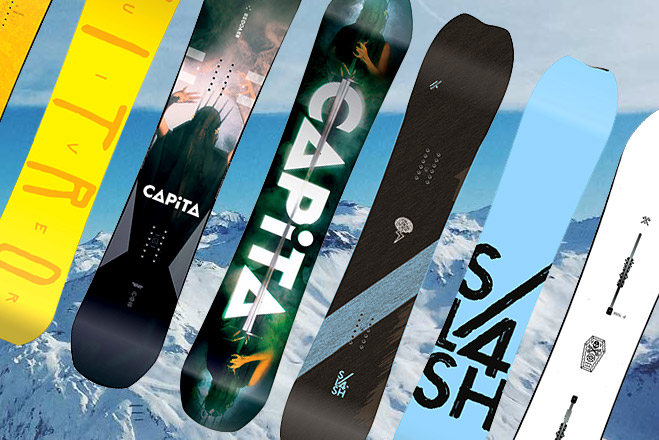You’d certainly agree when we say that snowboarding is one of the world’s coolest winter sports. When you slide down a frozen mountain on an oversized skateboard without wheels, you’ll notice something. You’ll feel the adrenaline rush in your system all through the descent. While the snowboards appear to be just a wooden plank, they’re an inseparable part of the entire experience.
There are different types of snowboards that cater to several riding styles and environments. However, there’s one thing common among all of them. They make your ride down the mountain a thrilling experience. So, let’s take a look at the different types of snowboards:
1. All-mountain
These snowboards are perfect for beginners. An all-mountain snowboard can take on nearly any kind of surface, which is exactly what a beginner needs. It can go over pistes, powder surfaces, and bumps without any hassles. All-mountain snowboards can also be used on park and pipe courses.
You don’t necessarily have to be a beginner to use this snowboard. It can be used by any snowboarder to have loads of fun. You’ll see that the tip of an all-mountain snowboard is broader than its tail. This makes it well-balanced towards the rear portion. You can also use it in the opposite direction.
2. Freestyle
When going down a park, most of the experienced riders would choose a freestyle snowboard. It has a design that enables the snowboarder to perform some tricks and stunts. You’ll see this type of snowboard used during competitive games. The freestyle rider would generally go down a halfpipe and perform the flips and turns while descending the mountain.
The design of a freestyle board varies according to the brand. Some of these boards have twin tips that are directional. It means that the board would have an asymmetrical shape with the stance at the centre. With this feature, the snowboarder can ride in either direction easily.
3. Freeride
These boards are excellent for those who spend more time snowboarding. Freeride snowboards have a directional design. As a result, they go only in one direction. This makes these boards more suitable for faster rides. The rider can explore the untreated or hard snow conditions with a freeride board.
They typically have a wide surface area, which allows them to float better. Their minimum size is around 160 centimetres. Freeride snowboards have the kind of features that make them extremely useful on a terrain that’s unpredictable. The only downside is that you’ll need to spend some extra cash to get them.
4. Powder
Powder snowboards have a unique design. These are the type of snowboards designed specifically for powder snow conditions. Upon taking a look at a powder snowboard, you’ll notice that it has a tapered and directional shape. This gives good traction and control over new snow.
The shape of the nose and the tail of this board is what makes it efficient. This shape allows the board as well as its rider to float better on the snow. The powder snowboards mostly have a longer tail and a wider nose. To prevent the snowboarder from falling over, the binding by the tail is closer to the edge.
5. Splitboard
Splitboard snowboards give snowboarders the versatility they need when exploring the backcountry. They split in half, making skis that make climbing untracked slopes easier. If you’re someone who likes to go on adventures and explorations, you’ll certainly enjoy these snowboards.
In a split board, you’ll find two discs and eight screws. They’re used to attach and detach the split board. In order to have a proper stance, you’ll also need to check and adjust the bindings of the strap. You’ll need some extra skills if you want to transition to a split board.

